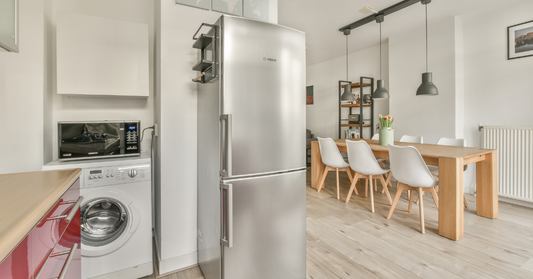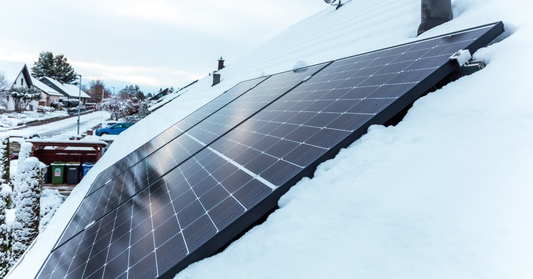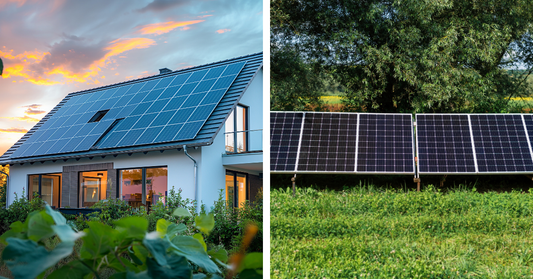Are you wondering whether energy storage is worth it? In times of rising electricity prices and dynamic market changes, solutions that allow you to store energy are becoming more and more attractive. An energy storage allows you to store produced energy, which you can use when production drops or electricity prices are high. With this solution, you increase the energy independence of your household while reducing your electricity bills. In this article, we will look at what exactly an energy storage is, how it works with a photovoltaic installation and renewable energy sources, and what benefits come from investing in this type of system.
What is energy storage?
An energy storage system is a system that allows you to store electricity generated by various sources – most often by a photovoltaic installation – so that it can be used at a later time. It allows you to effectively manage surplus energy that is not immediately needed. Accumulating energy allows you to use it when production drops or when electricity prices on the market are exceptionally high, which contributes to lowering the overall costs of energy use. Energy storage systems are the foundation of modern energy management in households and businesses.
Energy storage and photovoltaics
If you have a photovoltaic installation, integrating it with an energy storage can significantly increase its efficiency. Photovoltaic panels generate energy mainly during the day, when the sun shines most intensely. Unfortunately, energy consumption in many homes falls on the evening hours, when the energy production by the panels is negligible. Thanks to the storage system, you can store the surplus energy produced during the day and then use it in the evening or on cloudy days. As a result, you increase the self-consumption of energy, which means that you use your own, renewable energy instead of buying it from the electricity grid. This solution not only reduces electricity bills, but also helps to reduce the load on the network and reduce CO₂ emissions.
Investment in energy storage
The decision to invest in an energy storage facility should be preceded by a detailed analysis of the costs and potential savings. This investment allows you to store energy in line with your home's current demand, which allows you to use it when energy prices are at their highest. This allows you to reduce the costs associated with drawing electricity from the grid. What's more, using an energy storage facility translates into increased energy independence - even in emergency situations, when electricity supplies are interrupted, the stored energy provides emergency power. An additional advantage is the impact on the environment - by fully using energy from renewable sources, such as photovoltaic panels, you reduce the emission of harmful substances into the atmosphere.

It is worth remembering that the profitability of an energy storage facility depends on many factors. The key factors include the capacity of the storage facility itself and the specifics of your photovoltaic installation. The better the system is tailored to your individual needs, the greater savings you can achieve. An analysis of investment costs allows you to determine how long it will take to pay off the amount spent, and thus assess whether the investment is beneficial for you.
Energy storage installation
Professional installation of an energy storage device is key to its proper functioning. It should be remembered that the equipment itself, even the best quality, will not fulfill its role if it is not properly installed. Therefore, the installation should be carried out by experienced specialists who will take care of every detail - from the correct location of the device to the connection to the energy management system in your home. Correctly performed installation has a positive effect on the battery life, as well as on the efficiency of the entire storage system. Thanks to this, you can count on lower operating costs and higher energy security.
Electricity storage in your home
Implementing an electricity storage system in a single-family home is a solution that allows for optimal energy management. A home storage system allows you to collect energy produced by photovoltaic panels, which allows you to use it in emergency situations or during power outages. In practice, this means that even if the power grid fails, your home is still powered - which is extremely important, especially in the face of increasingly frequent power outages. With this solution, you not only reduce your bills, but also increase your energy independence, which affects the comfort and safety of your household.

Investment costs and profitability analysis
Investing in an energy storage facility involves specific costs that are worth analyzing in detail. These expenses include purchasing the device itself, its installation, and any servicing and maintenance costs. Cost analysis allows you to determine the payback period – the period after which savings resulting from lower power consumption from the grid will begin to compensate for the costs incurred. In practice, the return on investment can occur after just a few years, but this depends on many factors, such as the intensity of energy consumption, the storage capacity, or current electricity prices.
It is a good practice to compare the offers available on the market. The price of an energy storage device depends on the technology used – for example, systems based on lithium-ion batteries are often more expensive, but also have a longer lifespan and greater efficiency, while lead-acid batteries may be cheaper, but their efficiency is lower. It is also worth paying attention to additional functions that can increase the profitability of the investment, such as energy management systems that allow real-time monitoring of consumption.
Use of renewable energy sources
The energy storage works perfectly with renewable energy sources, such as photovoltaic panels. Thanks to this cooperation, you can not only fully use solar energy, but also contribute to environmental protection. Full use of renewable energy allows for a reduction in harmful emissions into the atmosphere, which is crucial in the context of combating climate change. In addition, using renewable energy sources in combination with the storage, you reduce the cost of electricity, which affects further savings in the household budget.
Energy storage capacity
A key parameter when choosing an energy storage device is its capacity. Adequate capacity means that the system is able to store enough energy to meet the current needs of your household. Systems with a capacity of around 10 kWh are a popular choice because they usually correspond to the average energy consumption of a single-family home. It is worth emphasizing that the larger the storage capacity, the greater the flexibility in energy management - however, larger capacity also involves higher costs. Therefore, it is important to make the right choice of system that will suit your needs and financial possibilities.

Efficient energy management
Well-managed electricity is key to maintaining stable bills. An energy storage system enables optimal use of accumulated surpluses, which translates into reduced electricity consumption from the power grid. Thanks to advanced monitoring systems, you can track energy consumption in real time and, if necessary, modify settings to achieve even greater savings. As a result, despite periodic increases in energy prices, your expenses remain at a constant, controlled level.
Energy storage not only reduces costs, but also significantly increases the energy security of your home. In emergency situations, when there are power outages, the energy storage system provides emergency power. Thanks to this, your devices remain powered, and you do not have to worry about sudden power outages. Additionally, having your own energy source increases your independence from the power grid, which is especially important in times of unstable supplies or frequent failures.
Support programs
It is worth knowing that investing in an energy storage facility can be supported by various government programs, such as the "My Electricity Program". Thanks to such initiatives, you can count on attractive financing conditions, which additionally increase the profitability of the entire project. Program support helps reduce the costs of purchasing and installing the system, which makes the investment more accessible even for households with a limited budget. By using such programs, you have a chance for a faster return on investment and greater savings in the long term.

Managing energy consumption and power outages
Modern energy storage systems allow not only for energy storage, but also for its intelligent management. Thanks to advanced algorithms, you can optimize energy consumption from the network, adapting it to current needs. The system decides independently when to use the stored energy and when it is better to draw it from the network - all in order to achieve maximum savings. Such solutions are particularly beneficial in conditions of variable energy supplies, when, for example, consumption increases at night and energy production from the photovoltaic installation disappears.
Imagine a typical day at home with an energy storage system. In the morning, when the photovoltaic panels start producing energy, the surplus is automatically transferred to the storage system. During the day, when your devices are working, the system decides whether to use the energy from the storage system or draw it directly from the grid – depending on current energy prices. In the evening, when production drops, the storage system supplies energy, so you don’t have to buy expensive energy from the grid. As a result, your home becomes more self-sufficient and your electricity bills are significantly reduced.
Electricity storage - get started
Energy storage is a modern solution that combines many economic, ecological and energy security benefits. By investing in an energy storage facility, you can effectively manage surplus energy, use it when demand is highest and achieve greater independence from the power grid. The key elements worth considering when choosing a system are the appropriate storage capacity, the technology used in batteries and professional installation. An additional advantage is the possibility of using support programs that reduce investment costs and accelerate the return on spent funds.
The decision to implement an energy storage not only reduces electricity bills, but also contributes to environmental protection by increasing the use of renewable energy sources. In an era of rising electricity prices and uncertainty on the energy market, such a solution is becoming increasingly profitable and worth considering by anyone who cares about the financial stability of their household.
Read the above information, carefully analyze your needs and financial possibilities, and then make an informed decision to invest in an energy storage. With this solution, you will not only gain savings and greater energy independence, but also contribute to building a more sustainable and ecological energy system for future generations.
It is worth remembering that investing in an energy storage facility is a long-term solution that brings benefits for many years. Even if the initial cost of installation may seem high, the benefits of lower energy costs, increased self-consumption and independence from the power grid make it a worthwhile investment from both an economic and ecological point of view.





